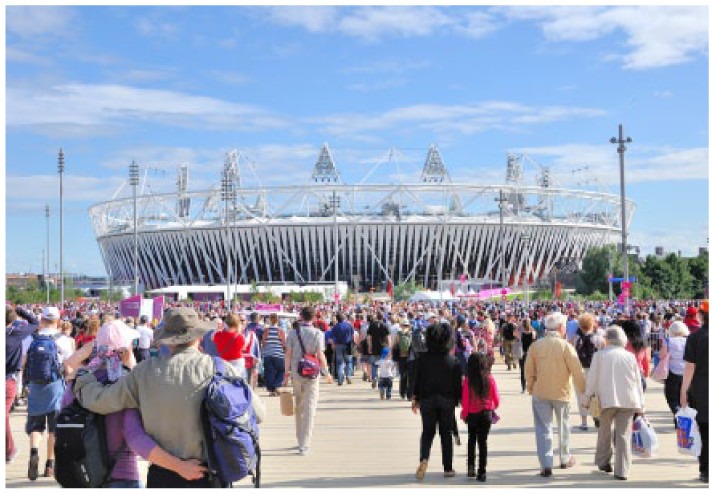Managing Public Gatherings: The Role of Temporary Facilities for Large Crowds
Public gatherings, whether they are concerts, festivals, or sports events, have the power to bring together diverse groups of people for shared experiences. However, managing these large crowds is no small feat. From ensuring safety and security to providing basic amenities, event organizers face numerous challenges. Among the many logistical considerations, the role of temporary facilities often stands out as a critical element in ensuring a successful event. This blog post explores the importance of temporary facilities in managing public gatherings and provides insights into how they contribute to a seamless experience for attendees.
Setting the Stage
When planning an event for thousands or even millions of attendees, organizers must create an environment that is both welcoming and functional. Temporary facilities, such as restrooms, first aid stations, and food stalls, play a pivotal role in transforming an open space into a venue capable of supporting a large crowd. These facilities serve as the backbone of an event’s infrastructure, ensuring that attendees have access to essential services throughout their visit.
The Importance of Accessibility
Accessibility is a key consideration when managing public gatherings. Temporary facilities must be strategically placed to ensure they are easily accessible to all attendees, including those with disabilities. This requires thoughtful planning and coordination to ensure that facilities are located in convenient locations and equipped with the necessary features to accommodate diverse needs.
Ensuring Safety and Security
Safety and security are paramount when managing large crowds. Temporary facilities, such as security checkpoints and medical tents, help event organizers maintain order and respond quickly to emergencies. By providing easily accessible first aid stations and security personnel, organizers can create a safe environment for attendees to enjoy the event without concern.
Managing Waste and Sanitation
Sanitation is a critical aspect of public gatherings, particularly when it comes to managing waste. Portable toilets and waste disposal units are essential temporary facilities that help maintain cleanliness and hygiene. By ensuring that there are enough restrooms and waste bins available, organizers can prevent the buildup of trash and reduce the risk of health hazards.
Facilitating Crowd Control
Effective crowd control is essential for the smooth operation of any public gathering. Temporary barriers, fencing, and signage help guide attendees through the event space, preventing congestion and ensuring a steady flow of foot traffic. By strategically placing these facilities, organizers can manage crowd movement and reduce the risk of accidents or injuries.
Enhancing the Attendee Experience
Beyond basic amenities, temporary facilities can also enhance the overall experience for attendees. Food stalls, merchandise booths, and entertainment areas provide additional opportunities for engagement and enjoyment. By offering a variety of options, organizers can cater to different interests and preferences, ensuring that every attendee has a memorable experience.
Adapting to Changing Conditions
Public gatherings are often subject to changing conditions, such as weather or crowd size. Temporary facilities offer flexibility and adaptability, allowing organizers to respond to unforeseen challenges. For example, additional tents or shelters can be set up in the event of rain, while extra restrooms can be brought in to accommodate larger-than-expected crowds.
Supporting Local Economies
The use of temporary facilities at public gatherings also has economic benefits. By employing local vendors and service providers, event organizers can support the local economy and create job opportunities. This not only benefits the community but also fosters a sense of collaboration and partnership between event organizers and local businesses.
Navigating Permit and Compliance Requirements
Organizing a public gathering often involves navigating a complex web of permits and compliance requirements. Temporary facilities must adhere to local regulations and safety standards, requiring event organizers to work closely with authorities to ensure compliance. This includes securing the necessary permits for temporary structures and ensuring that facilities meet health and safety standards.
Environmental Considerations
Sustainability is an increasingly important consideration in event planning. Temporary facilities can contribute to a more environmentally friendly event by incorporating eco-friendly materials and practices. For example, organizers can choose biodegradable waste bins, solar-powered lighting, or water-efficient restrooms to reduce the event’s environmental impact.
The Role of Technology
Technology plays a significant role in managing temporary facilities at public gatherings. From digital ticketing and cashless payments to real-time monitoring of crowd flow and facility usage, technology enhances the efficiency and effectiveness of event management. By leveraging technology, organizers can optimize the placement and operation of temporary facilities, ensuring a seamless experience for attendees.
Collaborating with Industry Experts
Successfully managing public gatherings requires collaboration with industry experts, such as event planners, facility providers, and logistics specialists. By working with experienced professionals, organizers can access valuable insights and expertise, ensuring that temporary facilities are planned and executed effectively. For example, if you’re organizing an event in the region, consider partnering with a local service provider for portable toilet rental in Wyoming. Their local knowledge and resources can prove invaluable in meeting your specific needs.
Conclusion
In conclusion, temporary facilities play a crucial role in the successful management of public gatherings. By providing essential services and amenities, these facilities contribute to the safety, accessibility, and overall experience of attendees. For event organizers, understanding the importance of temporary facilities and incorporating them into event planning is key to orchestrating order in the chaos of large crowds. As you plan your next event, remember to prioritize temporary facilities and consider collaborating with industry experts to ensure a seamless and memorable experience for all.
Keep an eye for more news & updates on Buzz Released!
